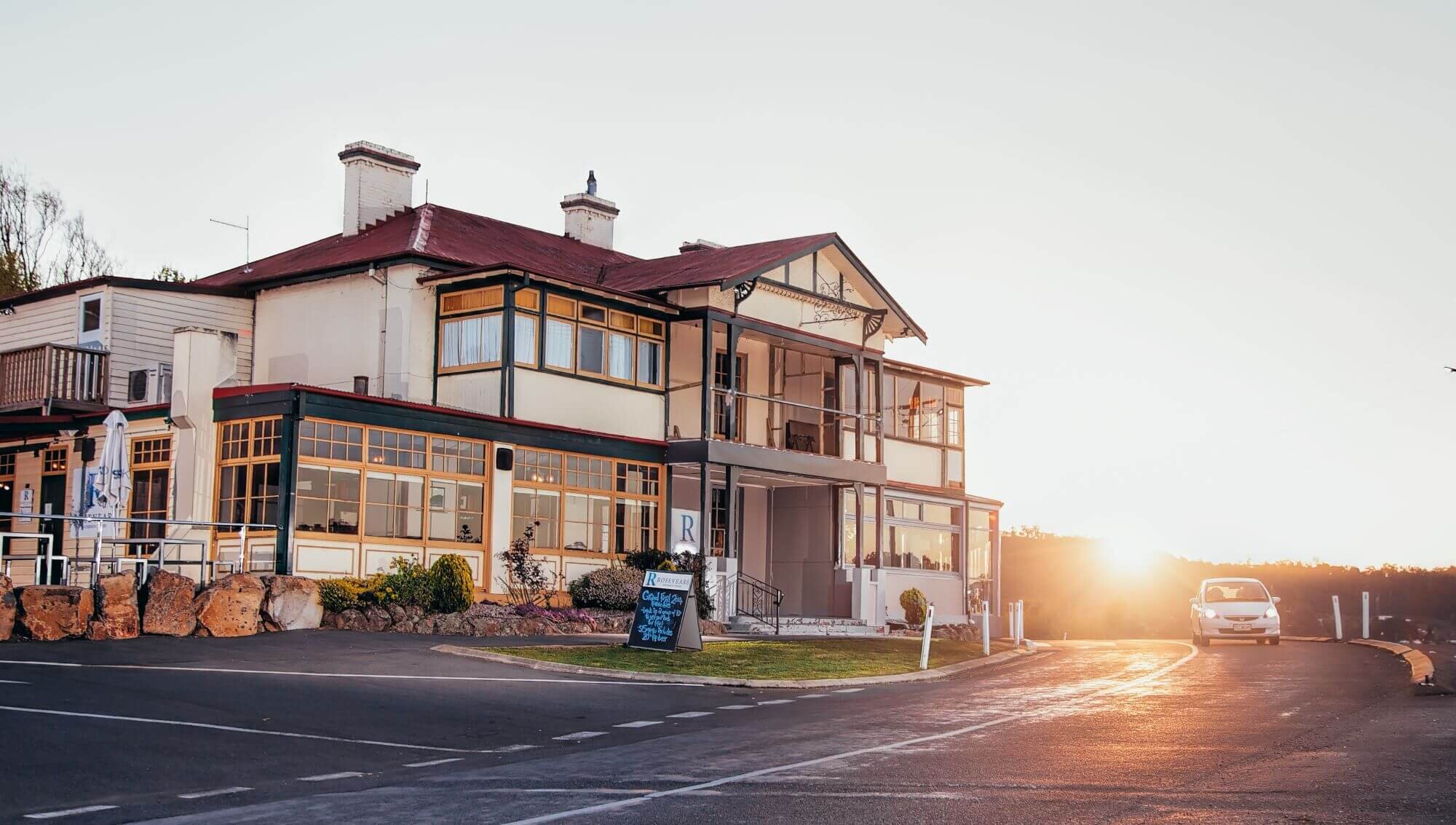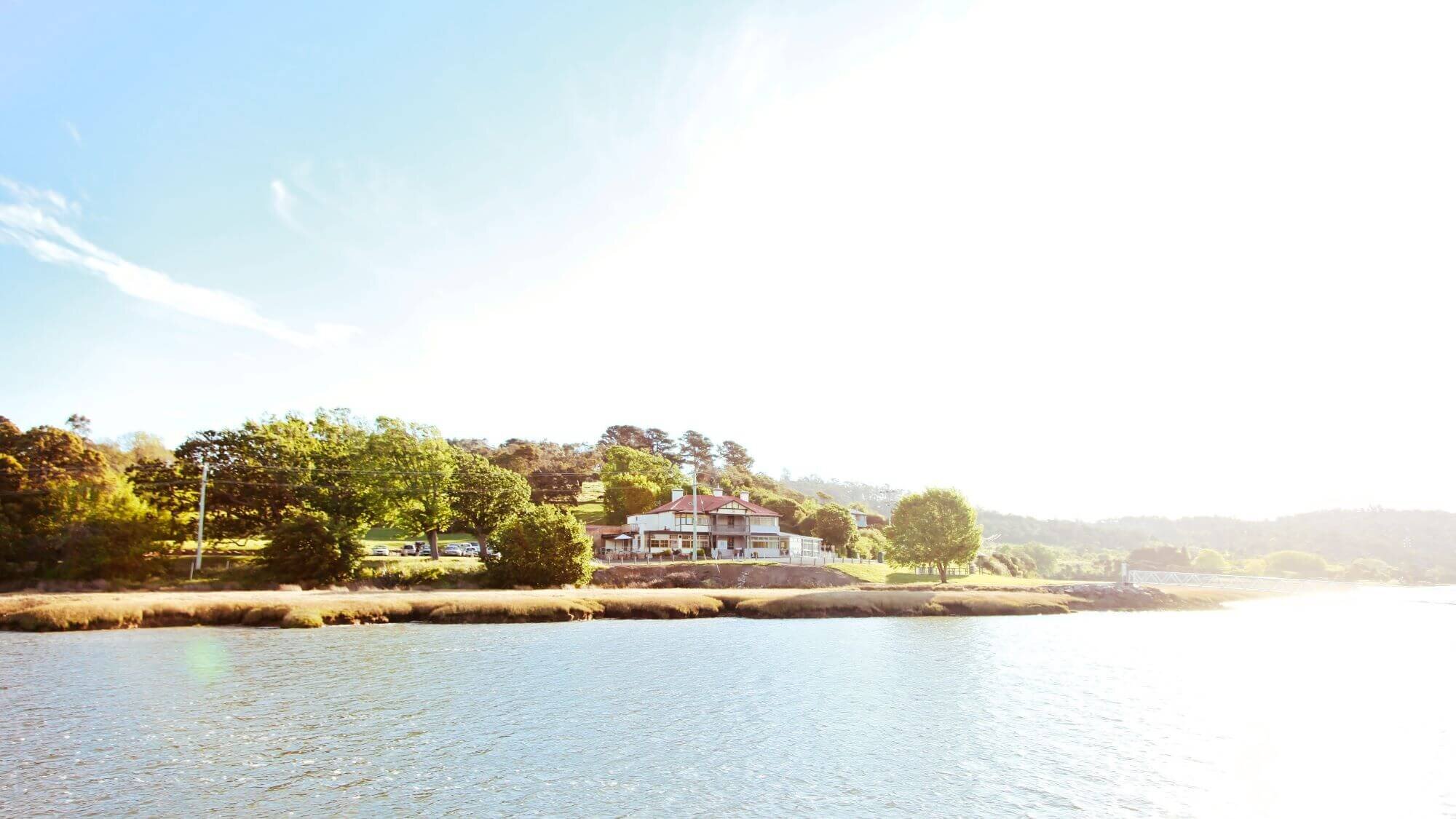
Iconic Tasmanian waterfront hotel.
In 1831 when The Rosevears Hotel began it was called The Rose Inn and the publican was William Henry Rosevears. The history of the Rosevears Hotel is significant to Northern Tasmania as back in the day boats would make their way up the Kanamaluka (Tamar River) to Launceston to deliver supplies to the young settlement and the river was the thoroughfare to take produce to other settlements in the colony to sell. The stop at Rosevears was a part of the journey up the Kanamaluka (Tamar River) as the crew would stop for a meal, or more likely a drink, on the way past.
Mr and Mrs William Henry Rosevear arrived from England and landed in Hobart Town in the early 1800’s. They headed north seeking a suitable location to settle and were granted 640 acres of virgin land in 1829 on the Tamar by the Governor. This decision displaced the movement of the indigenous Australians in this area as felling of trees began and fences went up around the perimeter of properties. The land grant was known as Cimitiere Point by the British. Henry Rosevears built the original dwelling on the existing site from timber which was milled on the property.
In 1848 the Government requested that Mr Rosevear build an inn or public house and he was granted a licence to keep an inn, which was called the Rose Inn. In 1854 he built the present day brick hotel and the bricks were obtained from a quarry on his land. The black timber doors that are evident in the hotel today were also sourced from trees on the property. When William Henry died, his two sons, Thomas and Edward inherited the property and split the assets. Edward acquired the cultivated land which is now called Rose Hill and Thomas was the publican of the hotel and worked on the land which is now called Rosevears. In subsequent generations the ownership of the hotel left the Rosevears family and has since changed hands many times.
In 2016 developer Allan Virieux purchased the property. His vision saw an addition of 26 contemporary accommodation rooms designed to accommodate visitors to the Tamar Valley.






